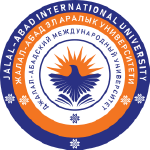Longevity of Double-Layered Polypropylene Mesh with Methylmethacrylate in Chest Wall Reconstruction: A Case Report
DOI:
https://doi.org/10.63666/ejsmr.1694-9013.2.I.2025.44Keywords:
chest wall reconstruction, methylmethacrylate, neurofibroma, polypropylene mesh, sandwich techniqueAbstract
Chest wall tumors, particularly neurofibromas—benign yet locally aggressive peripheral nerve sheath tumors—challenge thoracic surgeons due to their proximity to vital structures, recurrence risk, and demands for radical resection and stable reconstruction. This report describes a 62-year-old woman with recurrent right chest wall neurofibroma involving ribs 3–9, treated 10 years ago via wide excision and "sandwich technique" reconstruction using double-layered polypropylene mesh (ETHICON™ PROLENE®) reinforced with polymethylmethacrylate (PMMA). In a resource-limited setting without titanium prostheses, the 20 × 15 cm defect was addressed by molding PMMA between mesh layers, securing it to adjacent ribs with wires, and covering with a latissimus dorsi flap for rigidity, biocompatibility, and infection resistance. Postoperative recovery was uneventful, with discharge on day 7. Over 10 years, annual CT surveillance showed sustained prosthetic integrity—minor superficial mesh breaches (<1 cm) but no fragmentation or migration—and initial suspected recurrence (2 × 1.5 cm mass at year 9) that regressed spontaneously (1.5 × 1 cm at year 10), with no invasion or complications. The patient reported mild pain (VAS 2/10) but preserved pulmonary function and ambulation. This case highlights the polypropylene–PMMA composite's decade-long durability and cost-effectiveness ($50–100 vs. $500+ for titanium) as an alternative for large defects in low-resource environments. It supports wider use of hybrid techniques with vigilant follow-up for oncologic and prosthetic monitoring, advancing equitable thoracic surgery.
References
1. Harati, K., Kolbenschlag, J., Behr, B., Goertz, O., Hirsch, T., Kapalschinski, N., & Pallua, N. (2015). Thoracic wall reconstruction after tumor resection. Frontiers in Oncology, 5, Article 247. https://doi.org/10.3389/fonc.2015.00247
2. Salazar, R., Robotti, E. B., Chin, D. H. L., & Grossman, J. A. (1998). Giant neurofibromatosis of the chest wall: Two patient reports. Annals of Plastic Surgery, 41(2), 211–215. https://doi.org/10.1097/00000637-199808000-00013
3. Aghajanzadeh, M., Alavi, A., Aghajanzadeh, G., Ebrahimi, H., Jahromi, S. K., & Massahnia, S. (2015). Reconstruction of chest wall using a two-layer prolene mesh and bone cement sandwich. Indian Journal of Surgery, 77(Suppl 3), 39–43. https://doi.org/10.1007/s12262-014-1211-5
4. Gebremariyam, Z. T., Woldemariam, S. T., Beyene, T. D., & Baharu, L. M. (2024). Reconstruction of massive chest wall defect after malignant chest wall mass excision in resource limited setting, a case report. International Journal of Surgery Case Reports, 117, Article 109496. https://doi.org/10.1016/j.ijscr.2024.109496
5. Bajaj, T., & Aboeed, A. (2023, September 4). Chest wall tumors. In StatPearls. StatPearls Publishing. https://www.ncbi.nlm.nih.gov/books/NBK560718/
6. Messersmith, L., & Krauland, K. (2023, August 8). Neurofibroma. In StatPearls. StatPearls Publishing. https://www.ncbi.nlm.nih.gov/books/NBK470373/
7. Seder, C. W., & Rocco, G. (2016). Chest wall reconstruction after extended resection. Journal of Thoracic Disease, 8(Suppl 11), S863–S871. https://doi.org/10.21037/jtd.2016.10.59
8. Lampridis, S., Minervini, F., & Scarci, M. (2024). Management of complications after chest wall resection and reconstruction: A narrative review. Journal of Thoracic Disease, 16(2), 737–749. https://doi.org/10.21037/jtd-23-1214
9. Brascia, D., Mangiameli, G., & Marulli, G. (2024). Complex chest wall reconstruction after failure: A literature review. Journal of Thoracic Disease, 16(7), 4780–4793. https://doi.org/10.21037/jtd-24-345
Downloads
Published
Issue
Section
License
Copyright (c) 2025 Eurasian Journal of Scientific and Multidisciplinary Research

This work is licensed under a Creative Commons Attribution-NonCommercial-NoDerivatives 4.0 International License.












